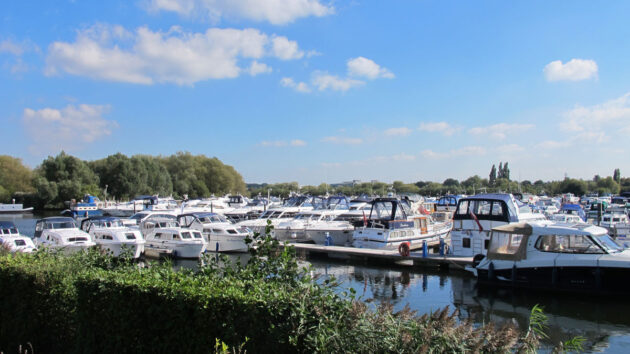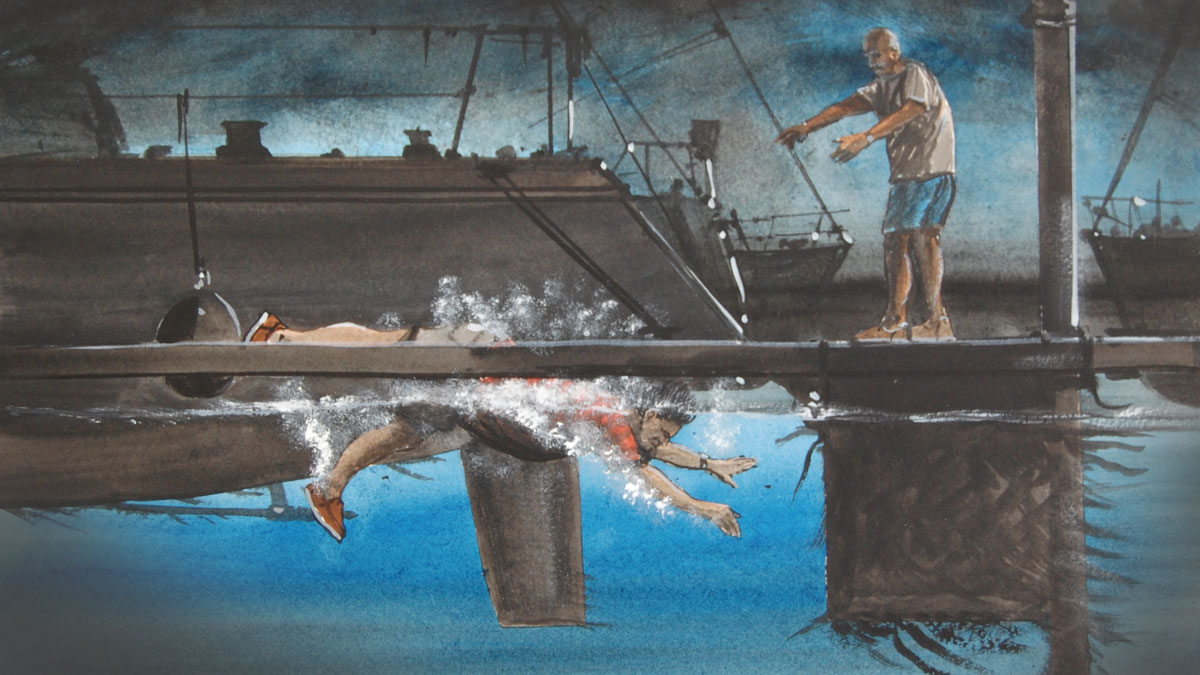The tragic death of a liveaboard boater, who drowned after falling into cold water and struggling with a marina safety ladder, has prompted a hard-hitting coroner's report demanding 'industry-wide changes'
Concerns have been raised about marina safety following the tragic death of a boat owner who drowned after falling into cold water.
Catherine Forbes, 57, a teacher who lived on her boat at Thames and Kennet Marina at Caversham, near Reading, died on 31 March 2023, after struggling to pull herself out via a pontoon ladder.
In his Prevention of Future Deaths report, published this month, senior coroner Darren Salter, of Oxford’s Coroners Court, said “Ms Forbes is the third person to drown in similar circumstances” at Thames and Kennet Marina since 2016.
The Tingdene Group-owned marina had been awarded The Yacht Harbour Association’s (TYHA) top 5 Gold Anchor award at the time of Ms Forbes’ death.
An inquest last April was told that following an evening with friends, Ms Forbes left the marina bar ‘moderately intoxicated’ at 11.12pm and walked back to her boat alone in heavy rain and winds and fell into the water.
Mr Salter said: “The drowning was unwitnessed but Ms Forbes was said to be a strong swimmer and there is clear evidence that she swam to a nearby ladder and tried to use it to climb out.
“She appears to have thrown her handbag from the water onto the pontoon. There were marks on the toes of her boots indicative of her trying to get out. This particular ladder was 1.5m in length with 3 rungs in the water but the bottom rung extended no more than 600mm beneath the surface of the water.
“It would have required Ms Forbes to raise her legs up high and have the necessary strength to pull herself up. It appears that, sadly, she was unable to do so before succumbing to the cold and drowning.”
A post-mortem examination confirmed that the cause of death was drowning. Mr Salter ruled her death as an accident.
The marina, owned by the Tingdene Group, was urged to take action “to prevent future deaths” and has since upgraded ladders to 2m in length with a minimum of 1m beneath the water.
“3 similar drownings”
In his report following the inquest, Mr Salter has flagged up “continuing industry-wide concerns” to the TYHA, which he said did not include ‘the important issue of safety’ as part of its Gold Anchor marina award scheme ‘key attributes or evaluation categories’.
He said: “I am mindful that safety improvements have been made at the Thames and Kennet Marina, specifically in relation to risk assessment and ladders having been upgraded to 2m in length with a minimum of 1m beneath the water.
“This is welcomed, not least because Catherine Forbes was the third person to drown in similar circumstances at the marina since 2016.”
Marina operators are encouraged to think about what measures are in place for anyone who falls in the water, while on their own and unwitnessed, to enable them to get out or raise the alarm.
Mr Salter added: “Perhaps the main issue relates to sufficiently designed ladders, in terms of length and grip, but also their number, placement and visibility from the water at day or night (flags, fluorescent signage, lighting for example).
“It is not for me to make recommendations and I am not an expert of course on marina safety but it is my duty to raise concerns that reflect the evidence heard at inquest and the issues helpfully raised by Ms Forbes family.
“With this in mind, I enquire if there are flotation devices or small platforms which sit on the surface of the water which a person could access more easily?
“I also enquire if there are alarm systems that exist or could be considered which can be activated from the water. I appreciate of course they would need to be non-electrical or non-battery or fully waterproof.
“Further, with regard to the Gold Anchor Award, it appears that the important issue of safety is not one of the key attributes or evaluation categories.
“Thames and Kennet held the top 5 Gold Anchors at the time of Ms Forbes death but were not fully compliant with the TYHA 2013 Code of Practice in relation to the length of all ladders.”
Beware becoming a man overboard (MOB)… in a marina
Everyone thinks about man overboard (MOB), but what do you do when you have a MIM, man in marina? Mark…
Man overboard: recovering a casualty from a marina
Rupert Holmes shares top tips on how to avoid the dangers of falling in while in a marina and how…
‘Decisive action’ promised
The Yacht Harbour Association (TYHA) said in a statement: “We were deeply saddened to learn of the tragic incident at Thames and Kennet Marina, and our heartfelt sympathies are with the family and friends of Ms. Forbes during this profoundly difficult time.
“The TYHA is fully committed to utilising the findings from the coroner’s report and taking decisive action to further enhance marina safety.
“We are working closely with the coroner and actively reviewing and updating the TYHA Code of Practice, which serves as the standard for marina operations providing essential guidance on safety and best practices.
“We will ensure that this revision incorporates any necessary changes to mitigate risks and help prevent such tragedies in the future.
“Ensuring the safety and well-being of marina users is our highest priority, and we will continue to work closely with the coroner, safety experts, and the wider marina industry to strengthen safety protocols across the sector.”
Improved ladder design

Three improved emergency ladders have been installed at Buckler’s Hard Yacht Harbour
On the South Coast, three re-designed emergency ladders have been installed at Buckler’s Hard Yacht Harbour.
The new additions are mobile, available for anyone to use and long enough so users can stand on the bottom rung, without having to bend their legs.
Deputy harbour master Adam Lewis, who implemented the changes with the Beaulieu River team, said: “If someone falls in the water, the panic which can follow means that both the person in the water and their friends or partners can struggle to locate installed emergency ladders easily.
“So what we wanted to create was a mobile ladder which we could attach anywhere in the marina and is available for anyone to use. I also wanted to make it long enough so they could stand on the bottom rung, without having to bend their legs which makes it as easy as possible to climb out of the water.”
He added: “Experience has shown that entering cold water has a debilitating effect on strength and flexibility. Combine this with an inflated life jacket and it becomes a real struggle to climb some ladders, where you have to get your foot up on to a ladder rung 50cm below the surface of the water.
“What we made in the end was a 2 metre long, lightweight ladder which has an additional ribbed stainless steel flat bar on the top to allow it to be hooked over a cleat on a pontoon, so you are never more than 4 metres from where we can put the ladder. It is also slightly angled when hooked on to a cleat, making it easier to climb.”

Beaulieu River deputy harbour master Adam Lewis with the new ladder,
which is fitted with a buoyant Man Over Board sling
A buoyant Man Over Board sling is fitted to each ladder, which can be clipped around a casualty while emergency services are alerted.
Two new-style emergency ladders have been placed on the visitors’ pontoon, as well as at the bottom of the gangway leading to the marina, so members of staff can pick one up while answering any calls for assistance.






